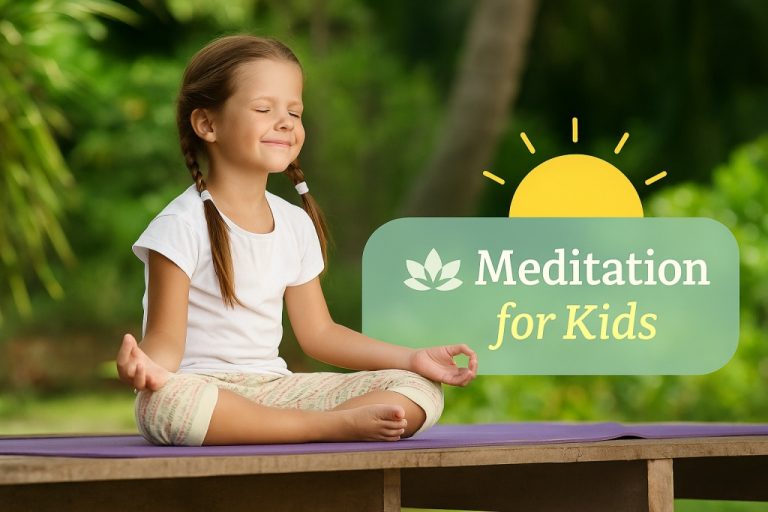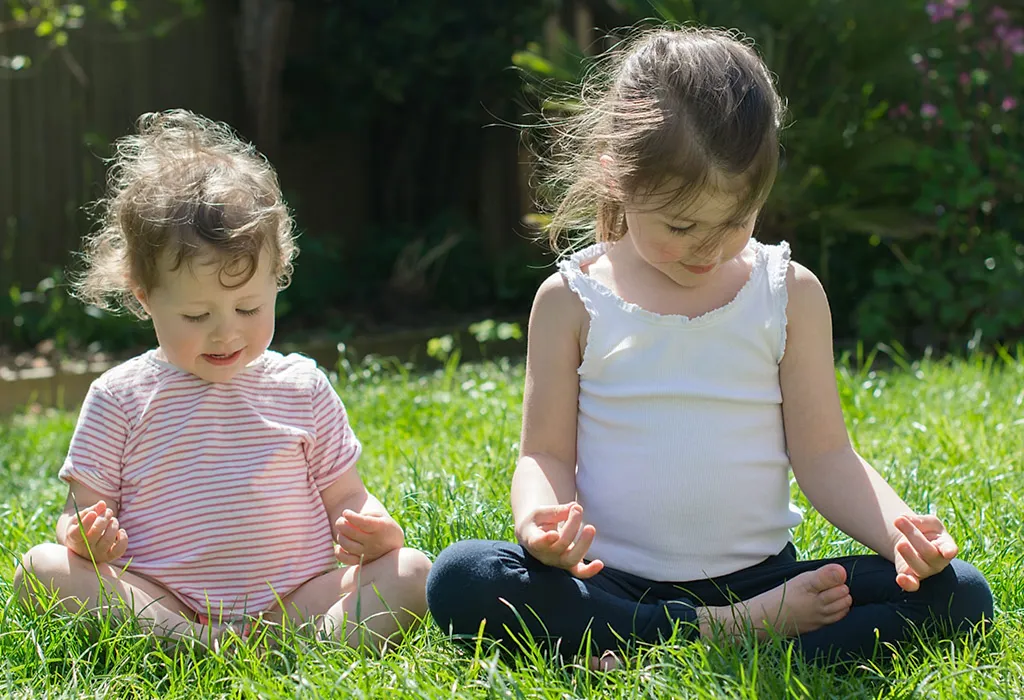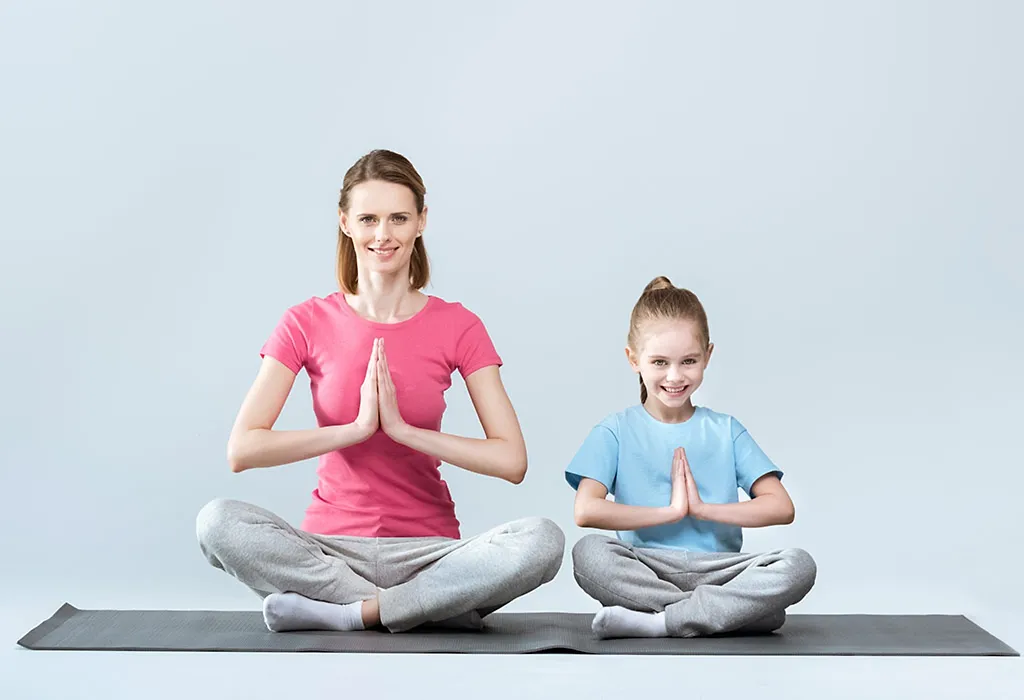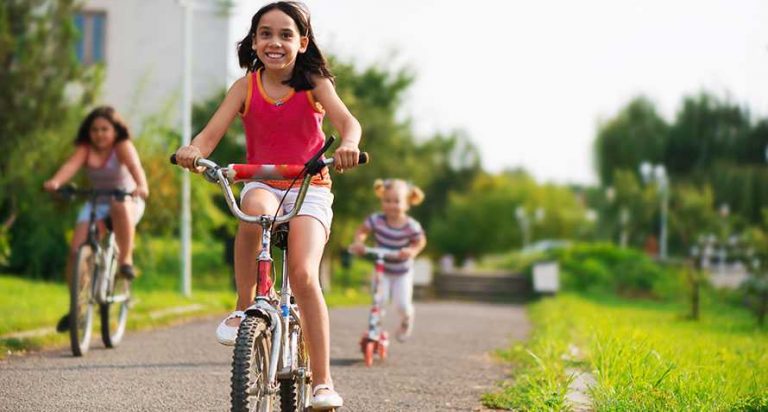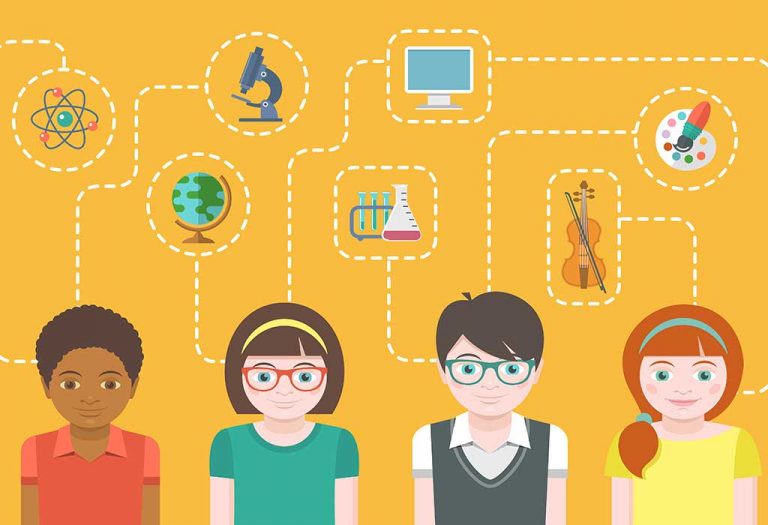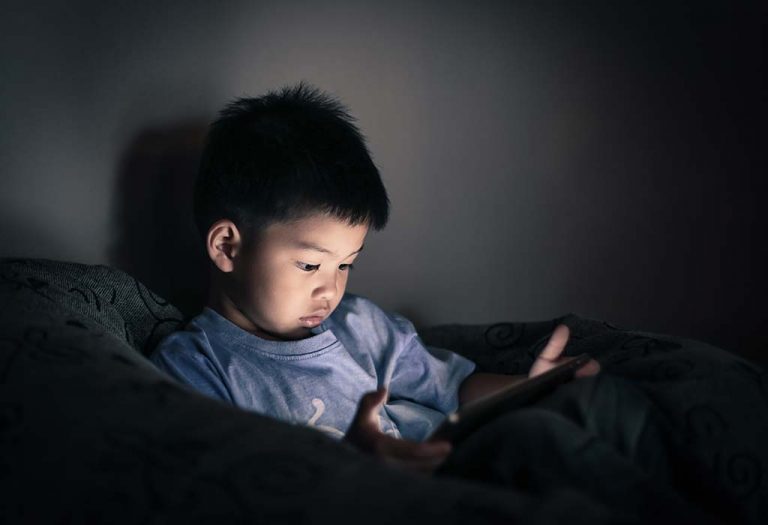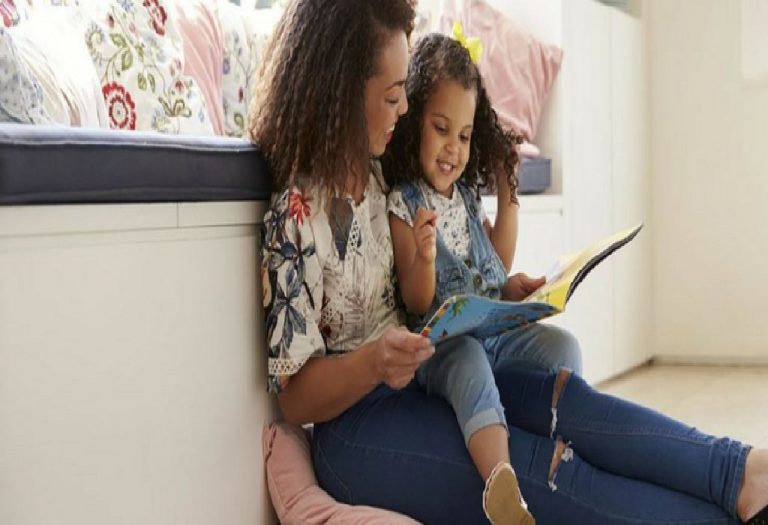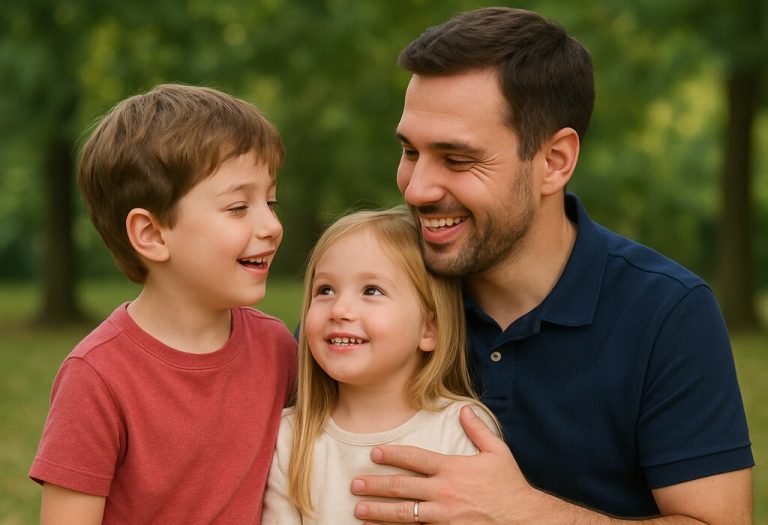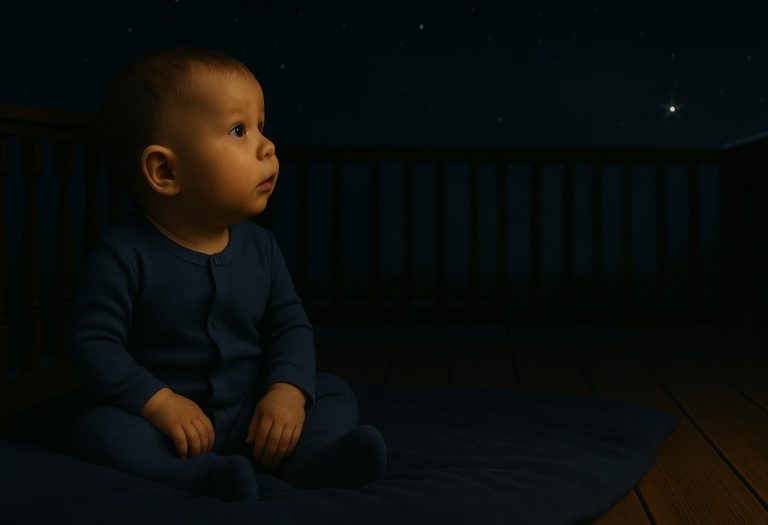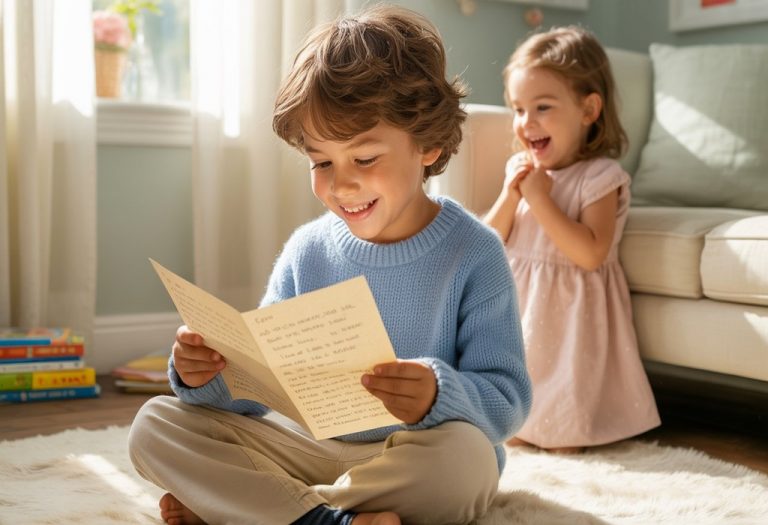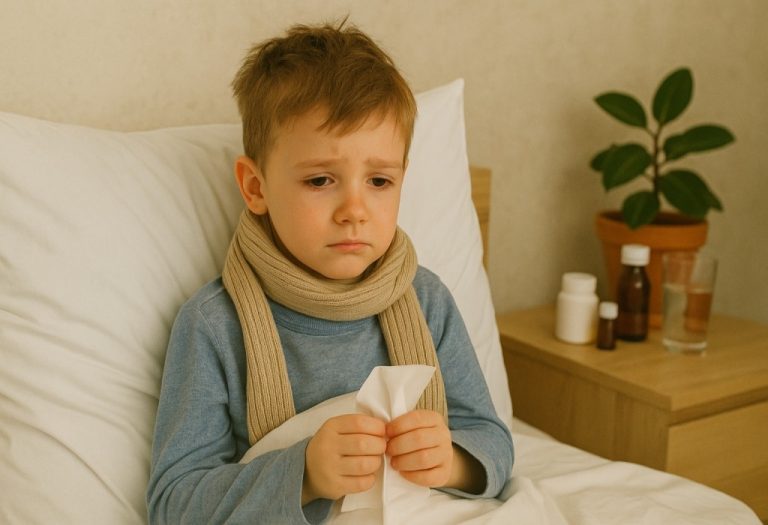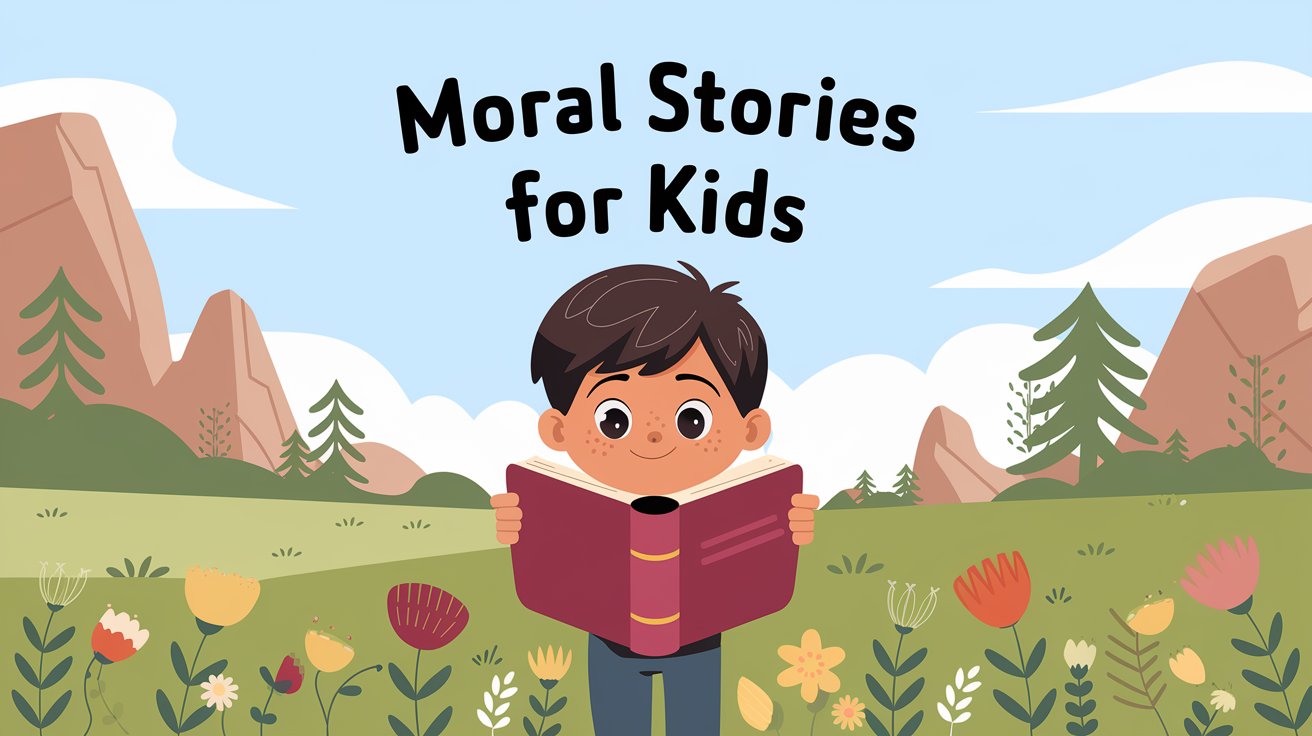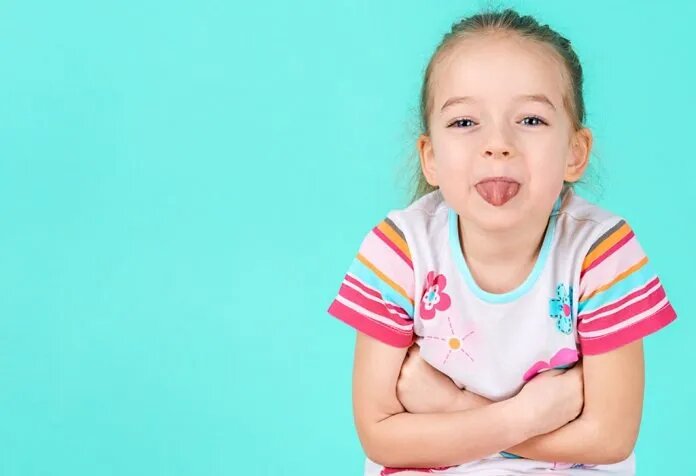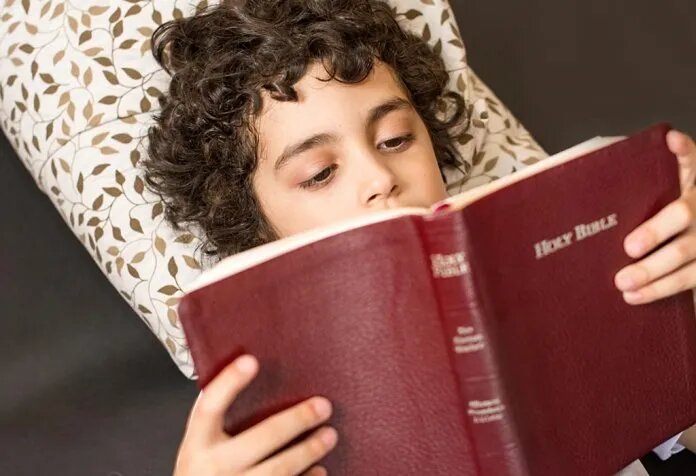Meditation for Kids: Benefits, Techniques & Mindfulness Tips
Meditation is a natural antidote to the stress and sensory overload that children may experience daily at school and at home. Meditation can help them focus, regulate their emotions, and improve their attention span. Overall, meditation imparts a sense of centre, helps balance emotions, and builds resilience. Now, if you want to teach your child how to stop, breathe, and focus, perhaps meditation is the answer. However, it’s hard to get children to sit still for 30 seconds, let alone 5 minutes. Children’s meditation may seem challenging at first, but it is certainly not impossible. It can improve their focus, sharpen their mind, help them retain new information, and allow them to process their feelings. In this article, we’ll provide you with techniques to help introduce your child to the practice of meditation.
What Is Meditation?
Meditation is a practice that involves concentrating or clearing your mind through several mental and physical techniques. Different types of meditation techniques focus on different goals, such as bringing relaxation, reducing stress and anxiety. Many adults use meditation techniques to fight off addiction; for example, doing meditation to quit smoking cigarettes or tobacco (1).
It’s not just adults; children, too, can do meditation. The American Academy of Pediatrics encourages parents and teachers to share meditation practices with children, bringing mindfulness meditation into their lesson plans. Simple acts of meditation, such as building focus and learning how to breathe, can be beneficial for children (2).
How Can Your Child Get Started With Meditation?
Children tend to have a strong spiritual connection and lack an ego. With practice, they can easily connect to their inner selves when they are taught how to do so. You could start at home or by enrolling your child at the nearest centre that teaches meditation for children. School programs that offer meditation are also a great way to get your child started.
Types of Meditation
A number of techniques can be used to still the mind in a meditative state. The types of meditation explained below can help kids meditate daily.
1. Guided Meditation
Guided meditation for kids is a method that incorporates a visual component into breathing exercises, helping to keep children’s minds focused during meditation and prevent them from wandering.
2. The Balloon
The technique involves teaching children to visualise their abdomen like a balloon. Every time they inhale, they imagine their belly expanding like a balloon, and when they exhale, they imagine the air releasing from the balloon. This may be harder to demonstrate to kids who are too young, as they may not be able to sit still for long. Try adding an extra movement to the exercise, such as stretching your arms in front or above your head as you inhale, to represent your imaginary balloon expanding.
3. Follow the Leader
If your child has a big brother or a best bud that they look up to as a leader figure, this method can be used for meditation. The breath is the leader, and your child’s mind is the follower, and the mind follows the leader to where he leads. Follow the breath as it moves inside and out and count the number of breaths at the end of every exhale. If the child is usually the leader, they can imagine themselves to be the ‘breath’ and their best bud, their ‘mind.’
4. Guided Relaxation Practices
This is a great technique that can be used by people of all ages when they are stressed out or unable to sleep. It involves systematically contracting and relaxing parts of the body while breathing slowly and deeply in sync with the body. For example, lie down comfortably and take a few deep cleansing breaths while you relax. Focus the attention on one of the feet and tense and squeeze it tight for two deep breaths. Relax the foot immediately and feel the tension being released as you exhale slowly. Repeat the same with the other foot and continue the process, moving up the body at points such as the calves, knees, thighs, hips and so on.
5. Classroom Meditation
Meditation before a class, such as mathematics, can help students learn better and score higher grades. Just before the start of the class, students are made to sit in a relaxed position in their seats with their hands on the desk, feet flat on the floor, and their backs straight. The eyes are relaxed and closed while they listen to a chant or hum it themselves.
Benefits of Meditation for Kids
Hundreds of studies on meditation conducted over the years have shown positive health benefits, including improvements in emotional intelligence, brain functioning, and psychological development, among others. For a deeper understanding, the benefits can be understood at the levels given below:
1. Psychological Benefits
Meditation and focused attention help children explore their minds more effectively and generate new ideas. Their memory is also enhanced, leading to improved performance and better grades in school. It helps reduce anxiety, insomnia, and depression, and the need to be constantly entertained (3). It also allows them to slow down and analyse themselves, which prevents addictive tendencies.
2. Emotional Benefits
Meditation and mindfulness help develop more positive emotions and better control over the negative ones. Children learn to appreciate their surroundings and what they have with a generally positive outlook on life. They also become kinder and more affectionate towards others, developing a greater ability to love. Their higher emotional intelligence leads to more confidence and happiness. Mindfulness, focusing on breathing, also helps calm down an individual, especially beneficial for those children who are impulsive and get easily upset (4).
3. Physical Benefits
The relaxing effects of meditation help children sleep well. The results are – good concentration, a stronger immune system and a healthy functioning body.
Meditation Techniques for Kids
Children of different age groups learn differently, and getting them to sit still in a place for long periods is almost impossible. Adding physical movements and mental visualisations, along with breathing techniques, is an effective way to get them to meditate.
Kids Aged 3 to 7 Years Old
At this young age, children benefit most from short, playful, sensory or imaginative practices that don’t require too much stillness or introspection. Here are some unique and powerful kid’s meditation techniques:
1. Lotus Mudra
For children in this age group, try the lotus breath, which connects to the breath and feelings. Starting the session off with fun activities that involve songs or discussions that build up to the idea of focusing their attention on an imaginary lotus flower. Children are instructed to make the lotus mudra by touching their thumbs and pinkies together to create a lotus. Then, they are asked to take a deep breath and imagine the flower’s fragrance and how they feel after smelling it. The session can proceed with questions about how they felt at that moment, how their day was and what emotions they went through.
2. Breathing Buddy
Give the child a small stuffed toy or “breathing buddy” (a soft toy) and ask them to place it on their belly. As they breathe in and out, the toy rises and falls. Encourage them to keep watching the motion and match their breath to gentle movement. This helps bring awareness to breathing in a fun, tangible way.
3. Bubble Blowing Breath
Invite the child to pretend they’re blowing soap bubbles. Ask them to take in a slow breath (as if inhaling a bubble wand) and exhale gently, “blowing” the bubble. This slows the breath naturally, encouraging calmness in an imaginative way.
4. Short Guided Visualisations (Imaginary Journey)
During a short meditation session, lead them into a 1–3 minute story where they imagine, for instance, a butterfly landing on a flower, or a friendly cloud carrying them above a meadow. Use simple sensory detail (what they see, feel, hear). This gently trains attention and calm in a playful format.
5. Listening Pause/Sound Hunt
Ask the child to sit quietly for 30–60 seconds and listen for as many sounds as possible (bird chirping, car passing, wind, etc.). Then discuss what they heard. This trains sensory focus and helps quiet the mind by anchoring in present awareness.
Kids aged 8 Years & Above
Once children get a little older, their attention span and introspective capacity expand, allowing slightly more sophisticated practices. Meditative breathing techniques can be taught to children after this age.
1. Bear Breath
Once they master the balloon breath, they can be introduced to the more advanced Bear Breath. This fabulous breathing technique helps relieve stress and anxiety, and can be practised at any time during the day to promote a sense of calm and focus. The technique involves breathing through the nose for 4 counts, holding the breath for four counts, and releasing it through the nose for four counts.
2. Box Breathing/Square Breathing
Teach them to inhale for four counts, hold for 4, exhale for 4, hold again for 4 (or use a count suitable for them). This rhythmic breathing shifts the nervous system toward calm and gives them a tool they can carry into stressful moments.
3. Body Scan Meditation
Guide them (either via a short recording or your own voice) to slowly move attention from head to toes, noticing sensations (tightness, tingling, warmth). Encourage nonjudgmental noticing. This helps them build awareness of bodily states and relax tension.
4. Mantra/Loving-Kindness Repetition
Use a short, positive phrase or mantra such as “May I be calm,” or “May I be kind.” They can repeat it silently or softly for a few minutes. Over time, you can extend this into sending kindness to others (e.g. “May you be safe, may you be happy”).
5. Noting/Open Awareness (Mindful Noting)
Instruct them to silently note their experience by labelling what they notice: “thinking,” “hearing,” “feeling,” “seeing,” etc. This technique builds meta-awareness—being aware of the mind’s movement—without needing to suppress anything.
Tips to Keep in Mind When Teaching Meditation to Kids
1. Keep sessions very short at first
For preschoolers, 1–3 minutes is plenty. Even older kids can begin with 5 minutes or less. Gradually increase if they show interest
2. Begin With the Breath
The mind follows the breath. There can be no meditation without proper breathing; therefore, it is imperative to lay down a strong foundation for breathing techniques. Since most meditation methods begin with the breath as an anchor, children who have proficiency in breathing techniques can meditate well.
3. Be playful and flexible
Use stories, imagery, games, or sounds. If a child wiggles or giggles, that’s okay. Gently guide them back, but don’t scold or force.
4. Learning to Let Go
Not all kids can follow the instructions fully. They don’t always respond in the way we expect them to. Therefore, tailor the meditation technique a little to suit their personality better. For example, some children may not want to close their eyes, and instead of forcing them to do so, you can give them something to look at as they sit in their meditative posture. In the end, meditation is a personal journey.
5. Put Imagination to Good Use
Giving them something peaceful, safe and serene to imagine is a good guided meditation practice. Children are natural at constructive imagination, and there’s no end to the fun things they can bring to a meditative session.
6. Be Patient
Children are likely to be restless at first. It takes a while for them to learn to settle down in a meditation session. Let go and allow their energies to find their own balance. There are numerous approaches to mindfulness and meditation; therefore, do not become attached to any one.
7. Practice as You Preach
Meditate along with your children as you teach them. It works better if it is a two-way street, and it makes it a valuable experience.
8. Consistency over length
Short daily practice is better than occasional long sessions. Building a habit is more powerful than occasional “deep” efforts.
FAQs
1. Can meditation improve academic focus and memory in children?
Yes. Studies suggest that regular mindfulness and meditation can enhance working memory, attention span, and executive functions in children, which often translates into better concentration and performance in school tasks (5).
2. Are there physiological changes in children’s bodies from meditation (beyond psychological)?
Yes. Regular meditation has been associated with a reduced heart rate, lower respiratory rate, improved autonomic balance (a shift toward the parasympathetic system), and reductions in stress biomarkers (e.g., cortisol), even in younger populations.
3. How do I encourage a child who resists meditation or says, “I’m bored”?
You can experiment with varied formats (walking meditation, mindful colouring, sound hunts, movement-based awareness), shorten the sessions further, or embed them in a game. Sometimes, pausing and asking what they don’t like helps them feel a sense of ownership.
4. Should a child meditate alone or with a parent/teacher?
Especially in early stages, guided or shared practice is preferable. Meditating with a child (parent, teacher, sibling) builds connection and accountability and provides a tangible example. Over time, children may develop the confidence to practice alone when they are ready.
Meditation, when taught at a young age, can help children cope with stress, manage their emotions, and develop into healthier adults. Introduce your little one to simple meditation techniques, and you’ll see a significant change in their approach towards life.
Also Read:
Mindfulness for Kids
Fun Learning Activities for Kids
Slokas for Kids to Learn and Recite
Good Habits for Kids that Each Parents Must Teach
Was This Article Helpful?
Parenting is a huge responsibility, for you as a caregiver, but also for us as a parenting content platform. We understand that and take our responsibility of creating credible content seriously. FirstCry Parenting articles are written and published only after extensive research using factually sound references to deliver quality content that is accurate, validated by experts, and completely reliable. To understand how we go about creating content that is credible, read our editorial policy here.





